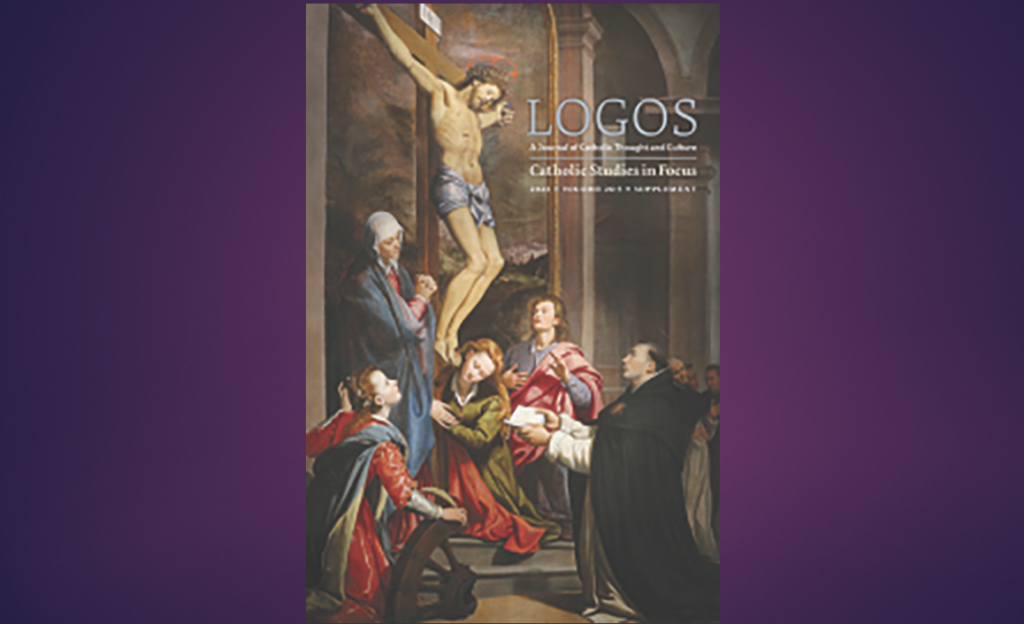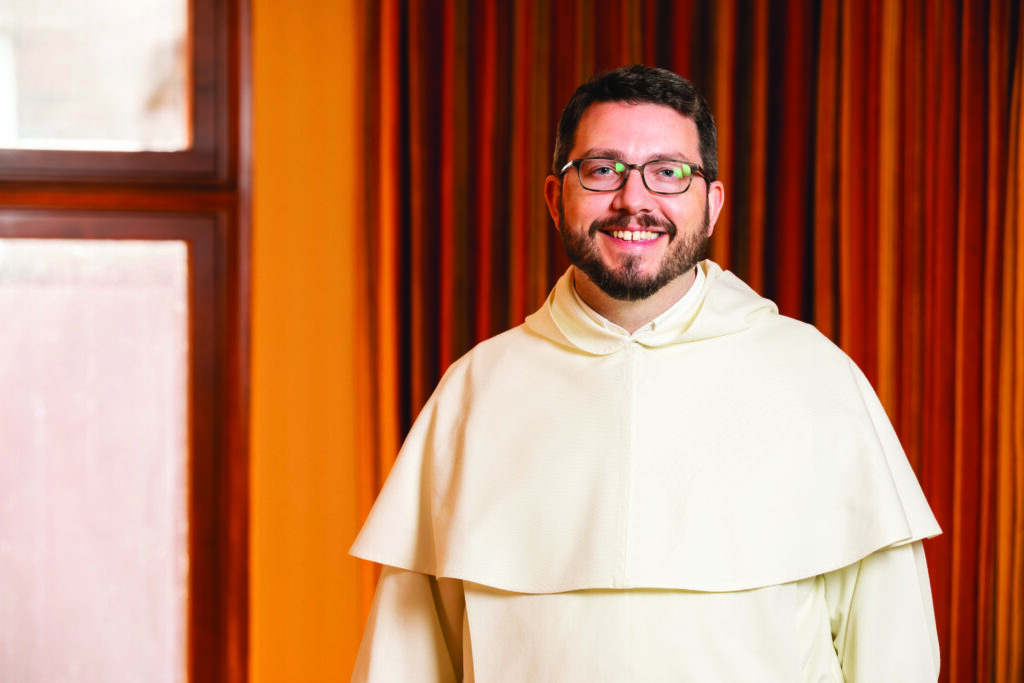Father Jan Michael Joncas, a priest of the Archdiocese of Saint Paul and Minneapolis, is an associate professor of Catholic Studies at St. Thomas. On Nov. 1, he delivered the center’s annual Joseph and Edith Habiger Lecture. Following are excerpts from Father Joncas’ lecture, which offered an opportunity to listen to and analyze music as a way of appreciating how Christians have confronted mortality with hope.
Human responses to death range from “rage at the dying of the light,” through fear about entering an unknown or punishing afterlife, through sorrow over loss balanced with a sense of continuation through progeny, to stoic acceptance of human mortality. Christians experience the mystery of death with all its wrenching ambiguity as other humans do, but they also confront death with a perspective grounded in the passage of Jesus the Christ through death into a new mode of existence signaled as “resurrection” in the Christian Scriptures and teaching. The texts and ceremonies of Christian funerals attempt to give expression both to the shattering and disconcerting rupture of existence brought about by physical death and the surprising and consoling hope held for the dead through faith in the risen Lord and the power of his Spirit. …
Given the unprecedented loss of human life in the 20th century from conflagrations that pitted multinational coalitions against one another as well as the collapse of Christian faith in its traditional European matrix, it is not surprising that 20th-century composers turned to the Requiem form not only to provide music for Catholic liturgy but also to honor and mourn those who died in two world wars as well as various civil wars, “police actions” and lesser conflicts. In this talk we explore contrasting versions of the “Agnus Dei” appearing in the Requiems of two outstanding 20th-century composers: Maurice Duruflé (1902-86) and Benjamin Britten (1913-76).
The French composer Maurice Duruflé stands in the tradition of the French organist-composer, participating both in secular musical life as well as the music of the Church. … Duruflé’s setting of the “Agnus Dei” reveals his distinctive compositional techniques. While the harmonic language is clearly influenced by French impressionism (as exemplified in figures such as Debussy and Ravel), the movement is clearly based in the Gregorian chant assigned to this text. Many contemporary listen- ers will recognize this “Agnus Dei” melody since it appears as part of the Missa simplex in the post-Vatican II liturgy. …
In this piece the Gregorian melody is treated with all the resources of a 20th- century tonal composer: It appears at various pitches and in various voices; it is treated polyphonically (with the imitations at the interval of a fourth, as in medieval organum); it even appears wordlessly in the accompaniment. But let me call attention to two musical elements that make this setting especially poignant. The first is the composer’s creation of a wordless countermelody, given at first hearing to stringed instruments, filled with yearning and pathos in the width of the leaps and the lack of resolution. I take this to be Duruflé’s personal lament over the death of his countrymen, a personal prayer that weaves around and highlights the liturgical prayer represented by the Gregorian melody. The second is the extraordinary extension of the final invocation, when, with the volume dying away, the composer has the choir keep repeating dona eis requiem. At the very end of the movement the choir in choral unison holds the word sempiternam (eternal) so long as to give the impression of entering into everlasting serenity.
In contrast to the clearly Catholic sensibility revealed in Duruflé’s “Agnus Dei” is the “Agnus Dei” from Benjamin Britten’s “War Requiem,” Op. 66. Written in 1962 for the dedication of Coventry Cathedral, rebuilt in the ruins of the former building bombed during World War II, this concert piece combines the texts of the Catholic funeral liturgy with the poetry of Wilfred Owen, a British soldier-poet killed at the end of World War I. A noted pacifist, the composer dedicated the work to four friends who had been killed in World War I. …
In Britten’s “Agnus Dei,” the choir inserts the Latin text after the tenor soloist sings individual verses of Owen’s poem “At a Calvary Near the Ancre.” Since the Latin text is sung mostly in unison to a trudging scalar passage in which the tritone is prominent, the concluding radiant choral chords on the word “Requiem” become all the more powerful. But the true genius in the composition is found in Britten’s setting of the English poem, the first verse elegiac, the second bitter, and the third rage-filled but dissolving into hope. Departing from both the vernacular and the assigned liturgical text, Britten concludes the movement by having the tenor soar above the choir with the plea dona nobis pacem (grant us peace), the central petition of the entire work. …
Over the centuries, composers have clothed the ritual texts of Christian funerals with musical sounds of varying insights, values and moods. From the sublimity of the Gregorian “In Paradisum” to the terror of Berlioz’s “Dies Irae,” from the serenity of Faure’s “Introit” to the challenge of Stravinsky’s “Requiem Canticles,” these compositions have expressed and shaped Catholic sensibilities in the face of death.






